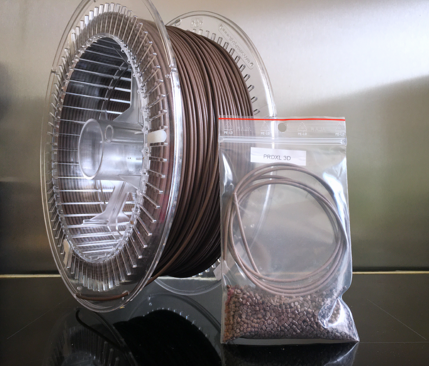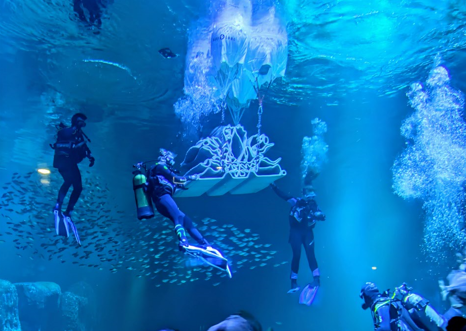In southern France, Robin Alauze, founder of LineUp Ocean, took on another challenge: helping coastal cities combat the impacts of climate change and human activity. These cities are facing rising sea levels, coastal erosion due to urban development, and a decline in marine life along their shores.
“We want to address all three of these issues with more effective maritime structures — ones that are eco-designed, bio-inspired, and bio-based,” explains Robin.
In terms of design and bio-inspiration, LineUp Ocean’s solutions check every box. Like traditional breakwaters, they reduce the destructive force of increasingly frequent large waves caused by climate change. But unlike massive piles of rock or concrete, these structures are not opaque barriers. Their lattice-like design allows small waves to pass through — waves that are crucial for naturally replenishing beach sand. Their coral reef-like shapes also encourage the return of marine life.
Naturally, 3D printing was the perfect method to create these artificial reef structures. LineUp Ocean partnered with 3D Concrete, a Perpignan-based company using XtreeE robots specialized in large-scale concrete 3D printing. But Robin wasn’t satisfied with simply submerging printed concrete blocks. “We knew we could do better in terms of circular economy and environmental impact,” he says.
So they explored every existing innovation in sustainable concrete and combined them to create a new material suited for 3D printing. Robin first studied low-carbon mortars, which use less water and cement and are optimized to reduce CO2 emissions. Then came the question of sand — the third key ingredient. LineUp Ocean turned to recycled oyster shells, already used by some construction companies. While existing mixes replace up to 30% of sand with oyster shell, Robin pushed the boundaries to 50% — a record ratio expected to increase in future versions.
“We’ve created the first 3D printable mortar that’s both low-carbon and shell-based, with an unmatched proportion of oyster shells,” Robin explains. “Beyond the innovation itself, it’s a perfect fit for our structures — oyster shells help the material integrate into the environment, offering strong mechanical properties, ideal porosity, and a pH level that supports marine biodiversity.”



